
Styrene Butadiene Rubber: Versatile material for various industries.
SBR is a versatile material that can be formulated to exhibit a wide range of properties. By adjusting the ratio of styrene to butadiene and incorporating additives, fillers, or reinforcing agents, the characteristics of SBR can be tailored to meet specific application requirements. This versatility allows SBR to be used in diverse industries with different demands. SBR is relatively cost-effective compared to other rubber compounds, such as natural rubber. It provides a cost-efficient alternative without compromising on performance. This affordability makes SBR an attractive choice for industries where cost considerations are important.
The raw materials used in the production of SBR, namely styrene and butadiene, are readily available and relatively inexpensive. This availability ensures a stable supply of SBR, making it accessible for various industries. SBR exhibits a combination of desirable chemical and physical properties that make it suitable for different applications. These include good tensile strength, elongation at break, tear resistance, and resistance to abrasion. SBR also offers good flexibility over a wide range of temperatures, maintaining its properties in both high and low temperature conditions. SBR is a synthetic rubber, meaning its properties can be engineered and controlled during the manufacturing process. This allows for consistent and reliable production of SBR with specific properties tailored to meet the requirements of different industries and applications.
These factors contribute to the wide range of applications for SBR, as different industries can leverage its favorable properties to meet their specific needs. The ability to customize and optimize its properties for different applications makes SBR a versatile and sought-after material. Styrene butadiene rubber has its own dangers. In fact, styrene butadiene rubber dust causes mild irritation or discomfort and irritation in the eyes, and it also causes skin discomfort. There is no risk of explosion. If the powder of this substance is swallowed in large quantities, it will cause coughing, nausea and shock.
Styrene butadiene rubber has the following advantages:
- water resistance
- resistance to abrasion and erosion
- resistance to flexural cracking
- flexible at low temperatures
- durability and tensile strength and good elasticity
- resistance to acid and alcohol
- resistance to oxidation
- heat resistance
- impact resistance
- resistance to weathering
- resistance to sunlight
- Inaccuracy
This polymeric material has disadvantages, some of which are mentioned below:
- This polymeric material has low resistance to hydrocarbon solvents.
- Styrene butadiene rubber has low resistance to oil, gasoline, other hydrocarbon liquids and ozone.
To take care of and prevent the possible dangers of this article, the following items must be observed:
- Avoid contact between this substance and the skin
- Use of chemical masks and safety goggles when styrene butadiene rubber evaporates
- Delivery of this material to the customer in suitable cube-shaped boxes, mainly in packages of 1050 and 1260 kg. Because this material is solid and does not have the ability to flow.
SBR exhibits good resistance to aging and weathering, making it suitable for outdoor applications. It can withstand exposure to sunlight, ozone, and certain environmental conditions, making it valuable in construction materials and automotive parts. SBR is relatively easy to process and mold into various shapes, allowing for efficient manufacturing processes. It can be easily mixed, extruded, or molded into the desired form, providing flexibility in production methods.
SBR serves as a cost-effective alternative to natural rubber in many applications. Natural rubber, while possessing excellent properties, can be more expensive and subject to price fluctuations. SBR offers comparable performance at a lower cost, making it an attractive choice for industries that prioritize cost efficiency. SBR meets various regulatory standards and requirements in different industries. It is compliant with international regulations regarding safety, performance, and environmental impact. This compliance ensures that SBR can be used in a wide range of applications without concerns about regulatory or legal limitations.
SBR exhibits excellent abrasion resistance, making it suitable for applications where wear and tear are significant factors. Industries such as tire manufacturing, conveyor belts, and footwear benefit from SBR's ability to withstand friction and resist abrasive forces. SBR possesses good flexibility and resilience, allowing it to recover its shape after deformation. This property is beneficial in applications such as footwear, seals, gaskets, and industrial hoses, where the material needs to accommodate movement, compression, or impact without permanent damage. SBR has adhesive properties, which make it suitable for use in adhesives and bonding applications. It can effectively bond different materials together, providing strength and durability to the adhesive joints.
-
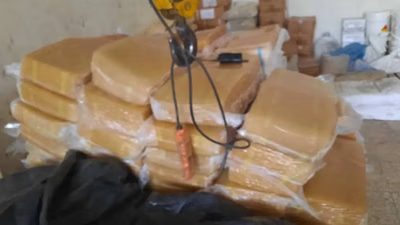
Styrene Butadiene Rubber (SBR) is a synthetic elastomer made from the copolymerization of styrene and butadiene. Its properties can be tailored by adjusting the ratio of these monomers, resulting in various grades suitable for diverse applications. SBR is known for its excellent abrasion resistance, flexibility, and resilience, making it ideal for industries requiring durable materials. The typical density of SBR ranges from 0. 92 to 0. 94 g/cm³, with hardness varying between 50 to 90 Shore A. Its tensile strength generally falls between 10 to 25 MPa, and it exhibits elongation at break from 300% to 800%. SBR maintains its mechanical properties even in low temperatures and offers moderate tear resistance.
While it has fair electrical insulation properties, it is not recommended for high-resistance applications. The versatility of SBR allows for modifications through additives and fillers to enhance specific characteristics like heat or oil resistance. This adaptability makes SBR a cost-effective alternative to natural rubber across various sectors.
-
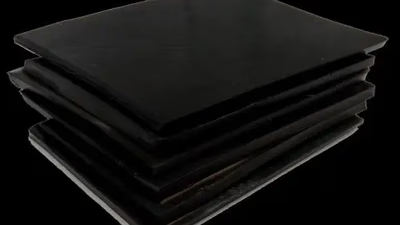
West Asia"s rich reserves of crude oil and natural gas provide a competitive edge in the production of Styrene Butadiene Rubber (SBR). The region boasts a well-established petrochemical industry, supported by significant investments in infrastructure and production facilities. Key players like SABIC, NPC, Petro Rabigh, IBR, and GPIC dominate the SBR market, leveraging local resources to cater to both domestic and international demands. Governments in West Asia recognize the economic significance of this sector and offer incentives to stimulate growth, including tax benefits and infrastructure development. This strategic support has led to the establishment of numerous SBR manufacturing facilities aimed at diversifying product portfolios beyond crude oil exports. The geographical advantage of West Asia facilitates efficient logistics for exporting SBR to major markets across Asia, Europe, and Africa. As global demand for synthetic rubbers rises—driven by industries such as automotive and construction—West Asia is positioned as a crucial supplier. The region not only meets local needs but also serves as a vital hub for international trade in SBR. "
-
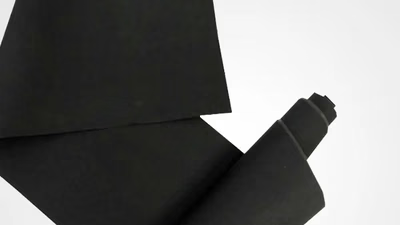
Natural rubber and styrene butadiene rubber (SBR) differ significantly in origin and properties. Natural rubber is sourced from the sap of the Hevea brasiliensis tree, making it a renewable resource, while SBR is a synthetic product derived from petroleum through polymerization. Both materials are elastomers, exhibiting flexibility and the ability to return to their original shape after deformation. However, SBR can be processed more easily and has superior heat resistance compared to natural rubber. The cost-effectiveness of SBR makes it a popular choice in various industries, including automotive and construction. Natural rubber excels in elasticity and resilience, making it ideal for high-performance applications like tires and seals. Both types can be modified with fillers and additives to enhance specific properties such as abrasion resistance and tear strength. Environmental implications also differ; natural rubber is more sustainable due to its renewable nature, while SBR"s production has a higher environmental impact.
Ultimately, the choice between natural rubber and SBR depends on the specific requirements of the application, including performance needs, cost considerations, and environmental factors. "
-
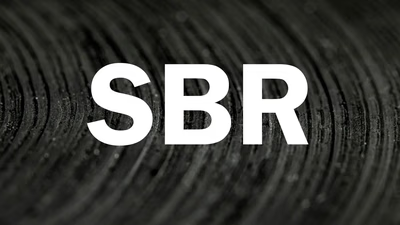
The automotive industry, particularly tire manufacturing, is the largest consumer of Styrene Butadiene Rubber (SBR), utilizing it for its essential properties such as abrasion resistance and durability. SBR is crucial in producing tires, accounting for approximately 70% of its consumption. This polymer enhances tire performance by providing better grip and wear resistance, ensuring safety on the road. Beyond tires, SBR is also used in various applications including footwear, conveyor belts, adhesives, and construction materials due to its flexibility and resilience. The demand for SBR is closely linked to the growth of the automotive sector globally, as it supports the production of passenger vehicles and commercial trucks. Despite having lower mechanical properties compared to natural rubber (NR), SBR"s cost-effectiveness and availability make it a preferred choice in many industries. Its versatility allows it to be utilized in products ranging from shoe soles to industrial hoses, highlighting its significance in both consumer and industrial markets. "
-
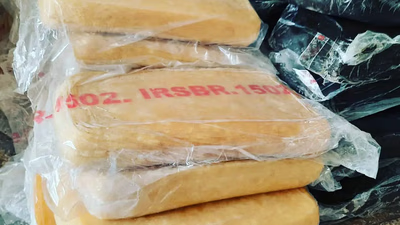
SBR (Styrene Butadiene Rubber) requires careful handling during transportation and storage to maintain its quality. It is typically transported in bulk containers, such as bags or drums, and should be protected from moisture, contamination, and physical damage. Ideal storage conditions include a clean, dry environment with temperatures below 25°C (77°F) to prevent degradation. Proper ventilation is essential to avoid mold growth, while exposure to direct sunlight and extreme temperatures must be minimized. During loading and unloading, care should be taken to prevent spills or damage. SBR should be stored away from reactive substances like acids and oils to avoid contamination. Implementing an inventory management system that follows the FIFO principle helps ensure older stock is used first. Regular inspections are necessary to monitor for signs of degradation or damage.
Compliance with local regulations regarding the transportation and storage of SBR is crucial for risk management. Petroleum traders can expand their offerings by including SBR in their product portfolio, catering to a wider customer base while ensuring safe logistics practices are followed.
-

SBR, or Styrene Butadiene Rubber, is a synthetic rubber known for its versatility and cost-effectiveness. By adjusting the styrene-to-butadiene ratio and incorporating various additives, SBR can be tailored to meet specific application needs across diverse industries. Its favorable properties include good tensile strength, flexibility at varying temperatures, and resistance to abrasion, making it suitable for applications in tire manufacturing, footwear, and construction materials. SBR is also relatively inexpensive due to the availability of its raw materials. However, it has limitations such as low resistance to hydrocarbon solvents and certain environmental factors. Safety precautions are necessary when handling SBR to avoid skin contact and inhalation of dust. Despite these disadvantages, SBR"s compliance with regulatory standards enhances its appeal in global markets. The ability to customize SBR"s properties allows businesses in the Middle East and West Asia to leverage this material effectively within their supply chains.






